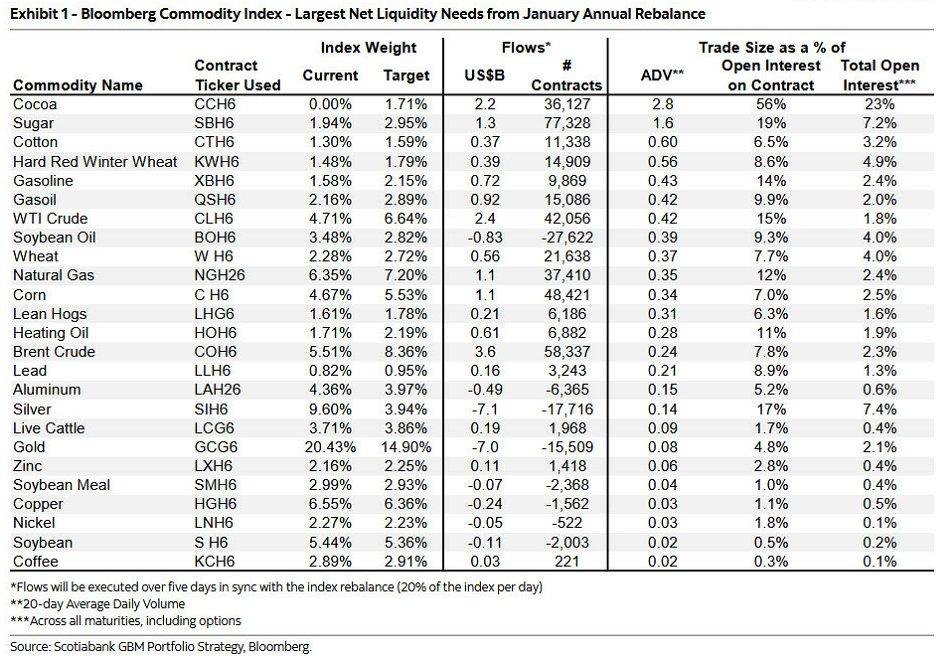Overview: The US dollar is firm against all the G10 currencies, except for sterling, which is straddling unchanged levels after labor market report that showed an uptick earnings remain elevated, and the unemployment rate ticked up to a new high since September 2021. The dollar reached a new six-day high against the Japanese yen near JPY157.40. The Chinese yuan (onshore) fell to new lows since last November as the mainland markets re-opened from the holiday-long weekend. Most emerging market currencies are lower, including the Mexican peso, which has become unhinged amid heightened political uncertainty. The peso staged a bit of a recovery in late North American dealings but came under pressure again as president-elect Sheinbaum encouraged the discussion of judicial reform.
European bonds, especially French bonds, remain under pressure following the EU Parliament election and the snap French election at the end of the month. German debt is still seen as a safe haven, while French, Italian, Spanish, and Portuguese 10-year yields are at new six-month highs. Ahead of the US sales of $39 bln 10-year notes today, the 10-year yield is off about three basis points to 4.43%. Yesterday's three-year note tailed, extending the streak of weak direct bidder participation. Equities are under pressure today. South Korea and India are exceptions in Asia Pacific where Australia's 1.3% drop led the move lower. Europe's Stoxx 600 is off for the third consecutive session, the longest losing streak in a month. US index futures are also softer. Gold is consolidating in a narrow range (~$2298-$2213). July WTI is little changed after rallying almost 3% yesterday, its biggest rally of the year amid concern that supply/demand considerations are more favorable ahead of the IEA report tomorrow.
Asia Pacific
Without new high-frequency data, the market had little distraction for tomorrow's FOMC meeting and Friday's BOJ meeting. China reports CPI and PPI tomorrow and disinflation/deflationary forces are expected to ease slightly. Beijing could report May lending figures are any day now, and the risk is on the upside on the back of seasonal factors and accelerated fiscal support. However, through April, aggregate lending aggregate lending has been last than in the first four months of 2023 (~CNY10.2 trillion this year vs.~CNY11.3 trillion). Meanwhile, there is much talk about China shifting exports to the Global South, and this does seem to be picked up in the data. Last week's export figures showed a 2.4% decline of shipments to the US, a 5% decline to the EU, and an 8.3% decline to Japan. Exports to Brazil were up 25% year-over-year, and shipment to ASEAN were up 4.1%. As one would expect, though, the surge of Chinese exports is causing some consternation outside of the US and Europe. Brazil recently announced a quota and tariff system on Chinese steel. Even more recently, Türkiye slapped a 40% tariff on Chinese-made vehicles starting in July. India has also levied tariffs on Chinese steel and aluminum. After a new European Commission is in place later this month, it is expected to announce tariffs on Chinese vehicles, and they might be retroactive. That said, Germany is a reluctant party, and it is not clear the how the drubbing the Scholz SPD did in the European Parliament elections (slipping to third place behind the CDU/CSU and the AfD) will impact it stance, if at all. Separately, there is a push in the US Congress to convince the Biden administration to include China's CATL and Gotion on the sanction list.
The dollar's range against the yen was set before the North American session yesterday, roughly JPY156.50-JPY157.20. The high in North America was recorded near JPY157.10 after the US Treasury's $56 bln sale of three-year notes tailed. It edged up to about JPY157.40 today. Resistance is seen in the JPY157.50-70 area, which may hold ahead of tomorrow's key US events. The Australian dollar recovered from one-month lows in the Asia Pacific (~$0.6575) to session highs in North America yesterday ($0.6610), leaving a bullish hammer candlestick. There has been no follow-through buying today and the Aussie remains in a narrow range of about $0.6590-$0.6610. Look for the consolidative tone to continue in North America. After tomorrow's US CPI and FOMC meeting, Australia reports market-sensitive jobs data on Thursday. The dollar rose to its highest level against the yuan since last November today, near CNY7.2545 as markets reopened from yesterday's holiday. The PBOC set the dollar's reference rate at CNY7.1135 (CNY7.1106 Friday) and the average in Bloomberg's survey was CNY7.2621 (CNY7.2425 Friday). The yuan, though seems to be more a function of the dollar's movement, especially against the yen, for which the offshore yuan shares the common characteristic of being an attractive funding currency. The greenback held below CNH7.2725, against the offshore yuan. The high from late May is slightly higher (~CNH7.2760) and the high for the year, set in mid-April was about CNH7.2830.
Europe
The post-mortem of the European Parliament election continues but the UK is center stage today and tomorrow for high-frequency economic data. The UK reported the latest jobs data today and tomorrow is April GDP (and details). Unemployment was ticked up to a new high for the year of 4.4% in the three months through April. The number of employees on payrolls fell for the fourth consecutive month in April, but the 3k decline was less than a tenth of the average in first quarter. The claimant count edged up. Given the BOE's reaction function and comments by some MPC officials, the earnings component may be the most important. Including bonuses, average weekly earnings (three-months, year-over-year) were unchanged but only because the March figure was revised up to 5.9% from 5.7%. Excluding bonus payments, average weekly earnings unchanged at 6.0%. It is the fifth month in a 6.0%-6.2% range. There is still practically no chance of a change in rates next week. It is not simply due to the July 4 election. The swaps market is sees almost a 45% chance of a cut in August, which is little changed from late May. The market's confidence of a September cut has increased to about 70% from 56% a couple of weeks ago. Tomorrow, April's GDP may have stagnated after 0.4% growth in March. Industrial production/manufacturing, services, and trade appear to have deteriorated sequentially, with construction, perhaps the only sector not to have contracted. The UK economy grew by 0.6% in Q1 24 after shrinking in the last two quarters of 2023. However, that likely overstated the growth, and 0.2% quarterly expansion seems more probable here in the second quarter.
Euro selling dried up slightly below $1.0735 yesterday and it recovered to almost the middle day's range in the North American afternoon. Still, it finished below what had been support in the $1.0785 area, and the 200-day moving average (~$1.0790) and could not get back above $1.0775 today. Also, the five-day moving average slipped through the 20-day moving average for the first time since May 2. The euro's 1.65-cent decline in the past two sessions is among the largest two-declines this year. Sellers in the European morning have taken it back to $1.0740. Below yesterday's low, support is seen in the $1.0700-25 area. Sterling recovered from a dip below $1.2690 to a little above $1.2735, leaving a bullish hammer candlestick in its wake. Follow through buying has been minimal (1/100 of a cent, according to Bloomberg). and has not risen above $1.2740. The next initial hurdle is in the $1.2750-60 area, after it stalled last week around $1.2800-15. A large sterling option (~GBP1.6 bln) expires tomorrow at $1.2795. According to Bloomberg's data, the euro gapped lower against sterling yesterday and fell to its lowest level since August 2022 near GBP0.8440. It settled slightly below its lower Bollinger Band (~GBP0.8460). It is probing yesterday's lows where options for 600 mln euros expire at the end of the week. Below there, initial potential may extend toward GBP0.8400.
America
Today is another quiet day in terms of the US economic calendar. Tomorrow features two of the three events that the markets are particular sensitive to: jobs, CPI, and Federal Reserve. The employment report is behind us, and despite the mixed details (e.g., household and establishment survey, full-time/part-time), the takeaway is that economy appears to have done better in May than April. We expect this to be borne out next week with gains in retail sales and industrial output after a flat April. It is a light week for Canadian economic data. The Bank of Canada seemed more dovish than the ECB but the swap market's nearly 60% probability of a second rate cut next month seems a bit high. Mexico's May CPI, reported at the end of last week, slightly softer than expected. Today's it reports April industrial production figures (median forecast in Bloomberg's survey is for a 0.2% increase after 0.6% in March). It averaged of 0.15% in the previous three months, the highest since last August. Still, the reverberations from the election results, and fear that constitutional changes that weaken the guardrails (e.g., independent Supreme Court) that checked the popular and populist government keep volatility elevated. Lastly, Brazil reports the IPCA CPI today, and the year-over-year rate is expected to rise for the first time in eight months. Brazil's central bank was among the first to cut rates, beginning last August. Through last month, it took the Selic rate down 325 bp to 10.50%. The swaps market has the next move being a hike by the end of the year.
After the pre-weekend US dollar surge of a big figure against the Canadian dollar, the greenback was in a narrow range yesterday. It spent most of the session in less than a 30-tick range above CAD1.3750. Recall that last Friday, after the employment data, the US dollar settled above CAD1.3750 for the first time since the end of April. It is holding above it so far today too, though it has held (barely) below yesterday's high. A US dollar high does not seem in place. The Mexican peso's slide extended yesterday, and the greenback reached nearly MXN18.66 yesterday in early North American trading. As the US dollar stalled more broadly, it pulled back toward MXN18.2150 in late dealings. However, the peso reversed its recovery amid in Asia Pacific trading today amid news reports that president-election Sheinbaum wanted judicial reform to be discussed before the new Congress sits. The dollar reached about MXN18.58. Volatility is still too high and the political outlook too uncertain to see new longs, while the carry makes its expensive to short the peso without strong downside momentum. The Bolsa rose by a little more than 0.25% yesterday after falling 2.75% before the weekend.
Tags: #USD,Brazil,China,Currency Movement,EMU,Featured,Mexico,newsletter,U.K.,US



























